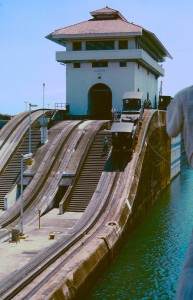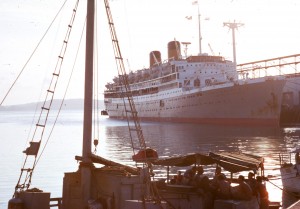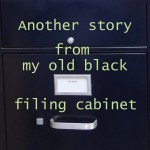Archive for the ‘Uncategorized’ Category
Recycling centers: the old days
 Rummaging through my old black filing cabinet, I came across an article I wrote in 1972 about recycling centers that was published in my Christchurch, New Zealand paper. These days, when everything recyclable gets dumped into the Blue Bin and carted away, I though it might be fun to read about the beginnings of the movement.
Rummaging through my old black filing cabinet, I came across an article I wrote in 1972 about recycling centers that was published in my Christchurch, New Zealand paper. These days, when everything recyclable gets dumped into the Blue Bin and carted away, I though it might be fun to read about the beginnings of the movement.
COME ON DOWN TO THE RECYCLING CENTER
Cupertino, CA
Spurred on by their ecology-minded kids, Californian families these days are loading up the station wagon at weekends with squashed cans, bottles, aluminum foil, and old newspapers, and heading for the local recycling depot.
The movement started a few years ago, when beer manufacturers discovered that they could earn bonus points in public relations by buying back and recycling the aluminum beer cans that had become an inevitable part of the landscape of the nation’s beaches and parks. As concern for the environment became a national obsession, clean-up campaigns became a fashionable, and profitable, project for youth groups.
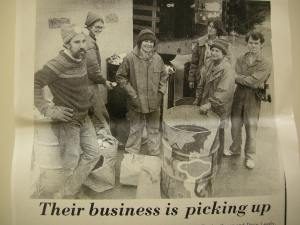
A 1970s recycling center. Image from Bainbridge Island, WA Community Cafe
Then the kids started taking over the collection depots. Each summer, high school social studies departments set up their own recycling centers. Sometimes the logistics of getting students organized can be overwhelming. One summer the boxes and bottles piled up embarrassingly high in the parking lot of a local supermarket before the kids from the high school across the road got themselves coordinated. And last year student apathy on the prestigious Stanford University campus allowed the recyclable trash to spread like a slum over the elegant grounds.
But a well-run recycling center can be a pleasure to visit. A Los Altos youth group set up shop in the grounds of an abandoned school. Every weekend enthusiastic volunteers were there, sorting, packing, stacking. Cheerful hand-lettered signs directed customers to the right cardboard carton for each item, and warned about the broken glass on the ground. One member invented an ingenious wooden lever for pressing the cans as flat as can be, and this is always in use, though most families now bring the stuff in already sorted and squashed. “Doing your bit for ecology’ has become an acceptable chore for children, and there is a therapeutic value in bashing cans nearly comparable to chopping firewood, back in the good old days before central heating and all-electric kitchens.
Some local government projects have fared less well. Neighboring Sunnyvale’s municipal recycling center is a lonely outpost in the corner of the city dump, way down in the swamp beyond the aerospace plants and the defense installations. Not surprisingly, the center made a loss last year.
Cupertino has tried to get the best of both worlds. The local chapter of Jaycees, supported by the city, the college administration, and the students’ Ecology Corps, has set up a recycling depot in a corner of the beautiful, and central, De Anza College grounds. It is less chaotic than the Los Altos center: a neat redwood fence surrounds the area, and the materials are contained in big steel skips. But there is still the sense of community involvement, the cheerful bustle on a Saturday morning, the satisfying clunk of bottles smashing into the skips. First quarter earnings showed a modest profit. The glass and aluminum are bought back by their respective manufacturers, and the tin and bi-metal go to a local producer of nursery pots.
Some recycling centers take newspaper, which is now reused for a variety of items, from dinner napkins to stationery. But the youth club paper drive, long a part of American life, takes care of most of this, and the big brown newspaper skip on the local school grounds is a familiar part of the landscape.
What about the future? Development suggestions have included a return to the regular garbage collection, with automatic sorters at the dumps to pick up reusable materials. The idea sounds more efficient, more appropriate to industrial America. But somehow it doesn’t quite fit the new environmental consciousness, with its emphasis on individual effort. And it won’t be nearly so much fun.
The Mechanical Mules of Panama
My father had a lifelong love affair with things mechanical. When he was in his seventies, I sat him down with a tape recorder. One of his memories was of passing through the Panama Canal. The year was 1920, six years after the canal was officially opened. Dad was eight years old, traveling from New Zealand with his parents and younger siblings to visit relatives back in England. He told me: “I was fascinated with these … I think they call them donkeys. A locomotive type of thing that ran on a rack – rails and rack drive, and those things pulled the ship through from one lock to the other. We had to climb up the steep climb at the end of the lock up to the next level or down.“
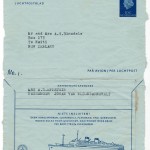 Standing at the rail of the “Johan von Oldenbarnevelt” in 1962, I shared Dad’s enthusiasm. In a letter to parents I wrote: “I did not realise how exciting [going through the canal] would be. It is an incredible piece of engineering, and extremely efficiently run by the Americans. We got up on deck just as we arrived at the first lock, with Balboa still in the distance, so we really saw the whole trip. We were pulled through the canal by teams of little trains called mules, that ran on a cogged track. It only took ten minutes for the huge locks to fill and empty. It was more impressive too because several other ships were going through the other way at the same time – as we went down they went up, and vice versa. From the time we approached the canal we saw lots of big ships – a wonderful change after seeing nothing at all but sea across the Pacific.“
Standing at the rail of the “Johan von Oldenbarnevelt” in 1962, I shared Dad’s enthusiasm. In a letter to parents I wrote: “I did not realise how exciting [going through the canal] would be. It is an incredible piece of engineering, and extremely efficiently run by the Americans. We got up on deck just as we arrived at the first lock, with Balboa still in the distance, so we really saw the whole trip. We were pulled through the canal by teams of little trains called mules, that ran on a cogged track. It only took ten minutes for the huge locks to fill and empty. It was more impressive too because several other ships were going through the other way at the same time – as we went down they went up, and vice versa. From the time we approached the canal we saw lots of big ships – a wonderful change after seeing nothing at all but sea across the Pacific.“
Dad mentioned seeing an alligator on the bank of Lake Gatun. I did too. My letter continues: “Through the centre of the canal we go through a big artificial lake with dozens of islands covered with jungle. Saw at least two alligators, and many beautiful birds. We were served lunch up on deck so that we wouldn’t miss anything – at the time we were going through the Gatun Locks, which is the biggest group – three locks together.
“The countryside changes very much through the canal. On the Panama side it is all lumpy hills, some of them quite high – the Gaillard cut goes through a fairly low part – about 250 ft. Then on the other side you descend to steamy swamps – now fortunately cleared of the mosquitos that ruined the first attempt at making a canal – the remains of the French project are still visible in parts. Even though this is the dry season, the jungle still looked hot and sticky – I would hate to be there in the wet season.”
The ill-fated French attempt to build a canal began work in 1881, but ground to a halt in 1884 because of engineering problems and high mortality due to disease. The United States took over in 1904. A decade later, by far the largest American engineering project to date was completed, and the canal was officially opened in August 1914.
As the JVO slipped smoothly through the canal, I felt I was part of history, both of the canal itself and of my own family, as I followed my father’s journey and shared his enthusiasm for those mechanical mules.
All photographs are by Tony Eppstein.
Maureen is exploring the contents of an old black filing cabinet in her attic, which contains 55 years of her writing notes
Remembering the Silence
An excellent piece in Mother Jones on the 39th anniversary of Roe vs. Wade brought to mind my own memories of growing up in the silence around even the word “abortion.” This poem was first published in CALYX.
ANOTHER STORY ABOUT LOVE
I tell him about
the story in my mother’s letter:
a girl I knew last year in high school
dead, a botched abortion,
septicemia,
the police phoning her parents,
saying Come and get your kid.
First time I’d heard the word
abortion.
I ask him what it means, hear
the silence around it,
his silence as we walk by the river
late at night
near his dorm room
rank with beer bottles
and dirty socks,
where Eartha Kitt sang for us
Birds do it, bees do it…
A wooden bench,
the slop, slop of the river.
His hand explores my thigh.
My leg closes against him,
saying no,
I don’t want to die,
not yet.
Recycled words
Just published a piece about recycling poems into prose on the Mendocino Writers Blog
